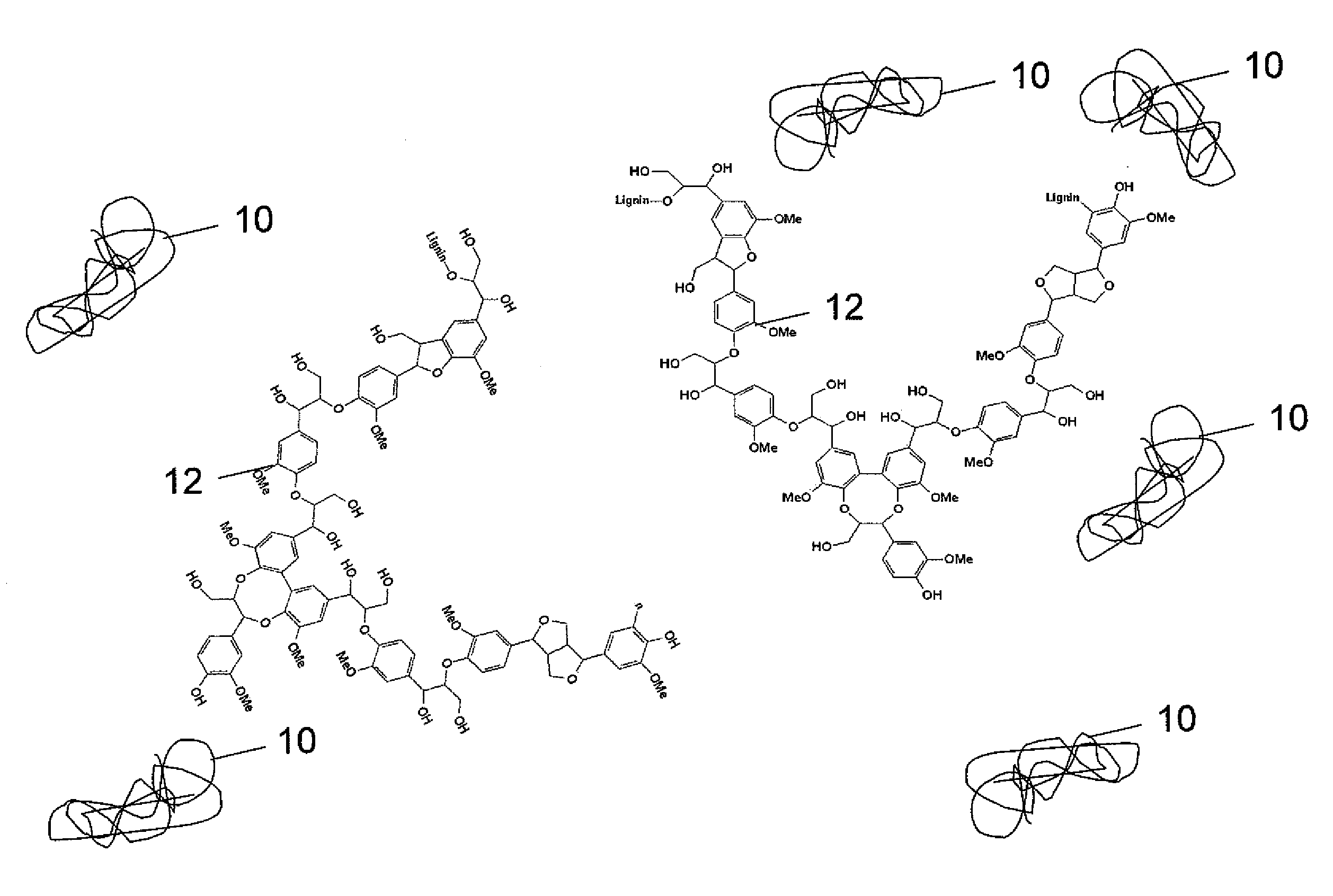Enzyme recovery sorbent, enzyme recovery unit, lignocellulosic biorefinery, process for recycling enzymes, and renewable material
a technology of enzyme recovery and sorbent, which is applied in the field of enzyme recovery sorbent, enzyme recovery unit, lignocellulosic biorefinery, and process for recycling enzymes, can solve the problems of high cost of biomass hydrolysis enzyme production, high cost of biomass pretreatment processing, and the cost of microbial cellulases needed to convert biomass cellulose into fermentable sugars, etc., to achieve cost-effectiveness, reduce operating cost and production cost, and reduce the cost of enzyme cos
- Summary
- Abstract
- Description
- Claims
- Application Information
AI Technical Summary
Benefits of technology
Problems solved by technology
Method used
Image
Examples
Embodiment Construction
[0027]This invention may include an enzyme recovery sorbent, an enzyme recovery unit, a lignocellulosic biorefinery, a process for recycling enzymes, and / or a renewable material.
[0028]According to one embodiment, the invention may include applications of enzyme recovery from lignocellulose hydrolysis solutions. The application may include absorption of cellulase enzymes onto a solid-support-immobilized lignin for removal of the enzyme from a bulk hydrolysis solution. The application may also include suspension into an appropriately buffered and / or pH-adjusted solution, such as to disrupt the lignin-enzyme complex and release the cellulase enzyme.
[0029]Desirably, but not necessarily, the lignin-enzyme interaction can be dependent on protein confirmation resulting in selectivity for appropriately folded proteins. The recovery and recycle of cellulase enzymes can improve the economic viability of lignocellulosic conversion to renewable materials.
[0030]According to one embodiment, the i...
PUM
| Property | Measurement | Unit |
|---|---|---|
| Fraction | aaaaa | aaaaa |
| Mass | aaaaa | aaaaa |
| Mass | aaaaa | aaaaa |
Abstract
Description
Claims
Application Information
 Login to View More
Login to View More - R&D
- Intellectual Property
- Life Sciences
- Materials
- Tech Scout
- Unparalleled Data Quality
- Higher Quality Content
- 60% Fewer Hallucinations
Browse by: Latest US Patents, China's latest patents, Technical Efficacy Thesaurus, Application Domain, Technology Topic, Popular Technical Reports.
© 2025 PatSnap. All rights reserved.Legal|Privacy policy|Modern Slavery Act Transparency Statement|Sitemap|About US| Contact US: help@patsnap.com



